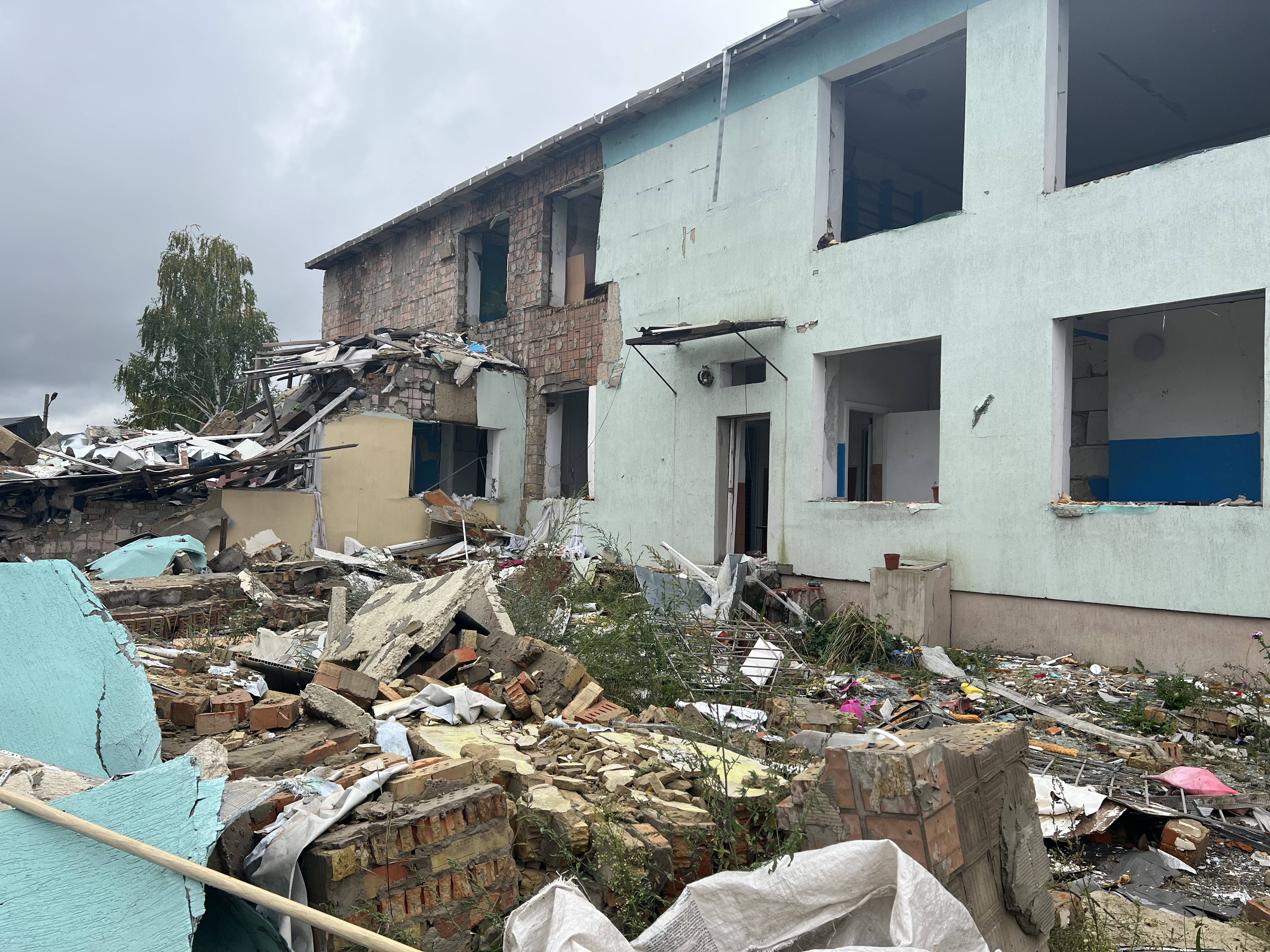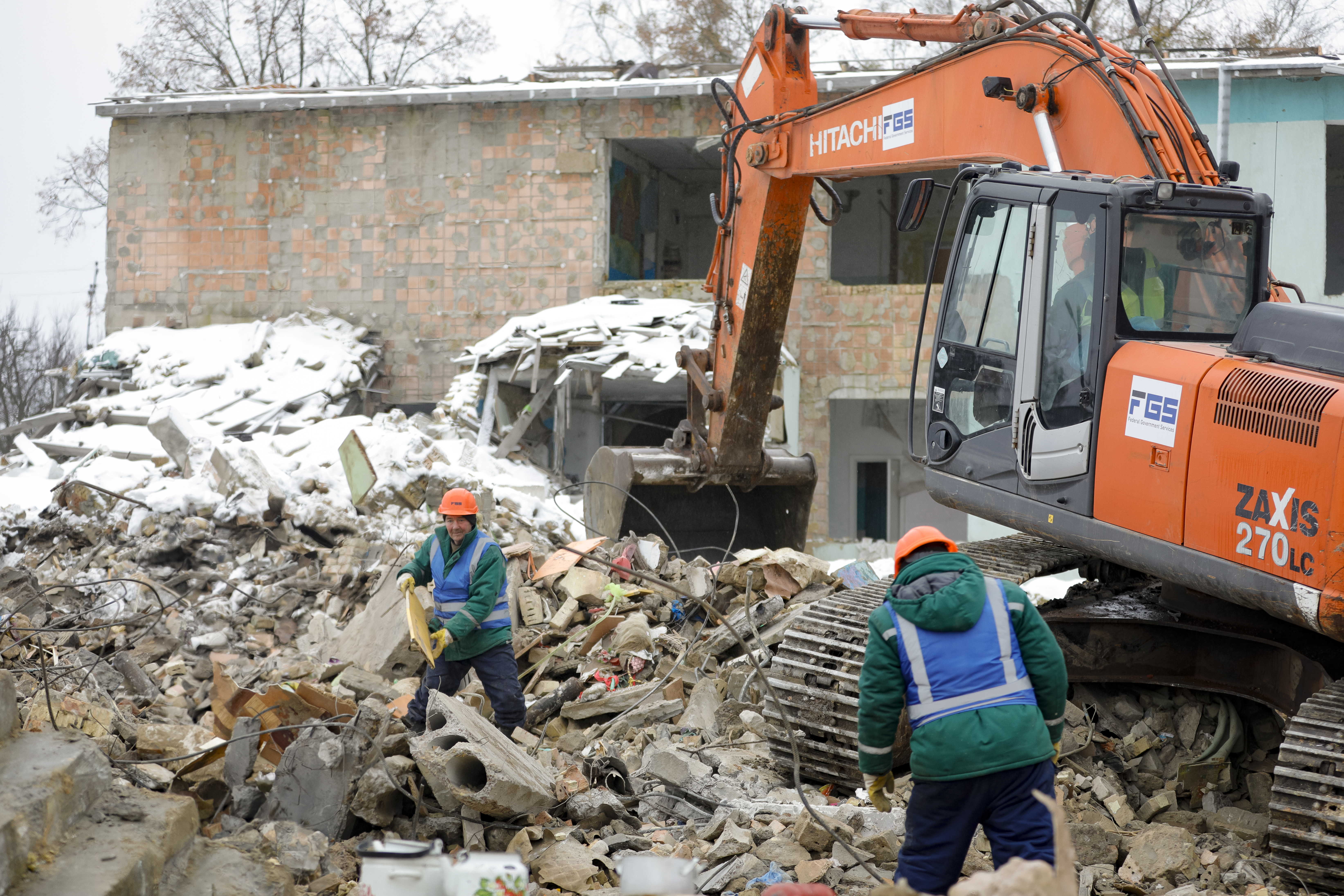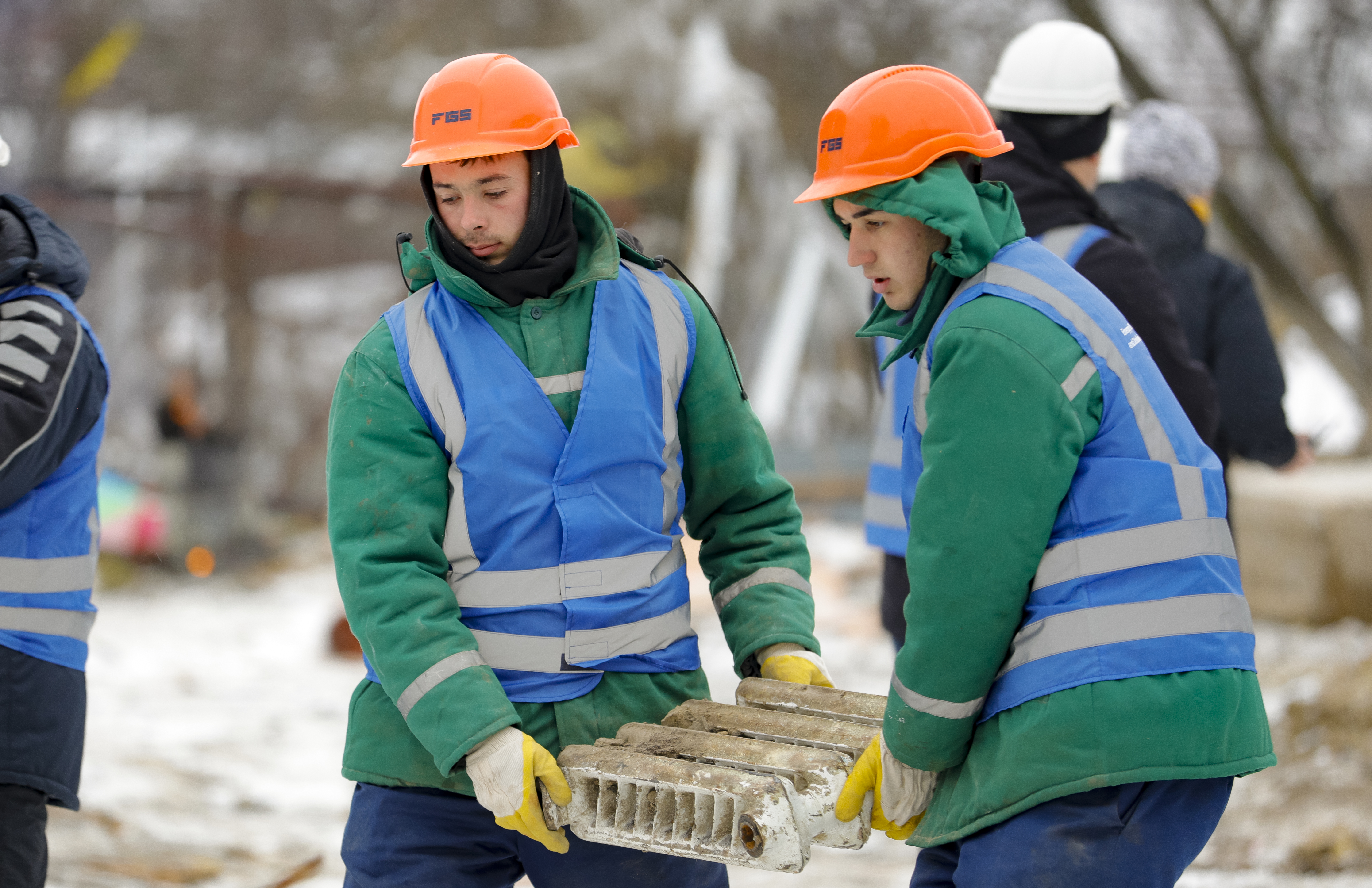An environmentally friendly method to rebuild Ukraine
August 15, 2023

Makariv Kindergarten Cleanup.
The Ukrainian landscape is littered with the ruins of buildings destroyed in Russia’s invasion of the country. Some entire cities – Mariupol, Bakhmut, Sievierodonetsk – have been nearly completely leveled. Destroyed homes, schools, and other structures are typical, whether due to artillery and direct fire in the areas most directly affected by the war or long-range cruise missiles far away in supposed “safety.” The Ukrainian people are left with the task of reconstructing what was destroyed.
The United Nations Development Programme, or UNDP, is offering a partial solution to this problem through a programme emphasizing environmental sustainability and local empowerment: taking the debris of buildings destroyed in the war and recycling them for reuse in other projects. By processing the remnants of ruined structures and reusing them for roads and other construction, there is less waste, fewer emissions, and a more readily available supply of materials. This process is also tied to the necessary next step of ongoing demining efforts will soon expand from its starting point in the Kyiv region.
A great deal of responsibility for the demolished materials recycling programme remains in local hands. First, the local and municipal governments are tasked with approaching the owners of the ruined property, or their nearest proxies, and taking them through the normal restitution process set aside in the state budget to help people get back on their feet, as much as that may be possible. Then comes the clean-up. A team will begin clearing the site while taking all necessary safety precautions. The next step is where the UNDP plays the most direct role – the recovered materials will be sorted and processed for reuse. The programme's core is that brickwork and concrete will be ground up and turned into gravel, which can be used to make new roads and earthworks. It will then be left in the hands of the local government for either public works projects or whatever else may be needed on a case-by-case basis. Wood will primarily be set aside to be re-purposed by whoever needs it.
One of the experts working on the project is Martin Bjerregaard, a debris and waste disposal manager who has worked in conflict and disaster zones from Bosnia and Herzegovina to Haiti. Explaining the role of the UNDP, he says, “It’s pretty standard stuff. It’s just that we got the resources, the contractors, the loaders, and all the heavy equipment to be able to do it. What is more technical is that we have to sort out all of the non-recyclables, so we’re just left with the concrete and the brick. Then we have to crush it down and screen it for the right fraction sizes and the right combinations of blends.”

Makariv Kindergarten Cleanup.
This local focus has two main benefits. One is straightforward economics – clearing, sorting, and processing recovered materials takes work, and that is work that goes to local communities. But it also helps promote environmental goals by cutting away at the massive and harmful effects of quarrying and then transporting stone and gravel.
A cornerstone of the UNDP’s building debris recycling programme is deploying mobile debris crushers that can be used wherever needed. They allow the bricks and concrete to be recovered, recycled, and reused in the same area without needing dedicated plants or hauling them anywhere else.
For every 10 million tons of debris waste, every cargo load to a landfill an average of 10 kilometers away adds up to 13 million kilometers of trucking. That is the distance to the moon and back 17 times. It also burns 15 million liters of diesel fuel. The wasted material would then just be discarded with no real plan for what to do with it, and any new construction would have to come from quarries. Instead, the recycled gravel from the 10 million tons can be used to build enough roads that it would be the equivalent of stretching from Kyiv to Brussels.
That is just for 10 million tons. The amount of debris in Ukraine is in the tens of millions.
“That’s a huge amount of trucking,” explains Bjerregaard, “Normally, those trucks go past schools; they go past hospitals. There is a huge amount of trucking going on in your normal life. If we recycle half the debris locally, we halve that trucking.” Green initiatives for energy saving or personal waste reduction are quite popular, but often leave out the largest, most structural causes of greenhouse gas emissions. The road time needed to bring a product from where it is sourced to where it is used is a massive source of pollution.
Not bringing the debris to landfills also saves space in them, and they are getting closer to max capacity. Ukraine simply does not have the landfill space to be able to throw everything away. Every bit of debris recycled is another bit that does not create more demand for landfill, which has its own environmental risks.
An example of one town where the UNDP has had a direct impact is Makariv, which is down the highway to the west of Kyiv, where 200 civilians were killed and 40 percent of structures were destroyed in Russian attacks. Their two kindergartens were both destroyed, leaving nowhere for kids to go. The UNDP, together with the Government of Japan, surveyed the area for explosives. Then they directed volunteers to clean away the territory of debris. What could be salvaged and reused in other schools was, and they set the rest aside for recycling. Nothing can fully repair what was lost, but at least the grounds that kids used to play on are free of anything that can hurt them further. What was once their school is waiting to be recycled to repair other damage to their hometown.

Makariv Kindergarten Cleanup.
Of course, while this process is, functionally, mostly the same as after demolitions during times of peace, wartime conditions make everything far more complicated and dangerous. These are not random assorted bricks, but buildings destroyed using high-grade munitions. The rubble contains unexploded ordnance and even improvised explosive devices purposely left behind to kill. Unfortunately, there have been too many times when families returned home to what they think is supposed to be safety, only for that home to be a trap. The UNDP prioritizes making sure that debris-clearing teams are safe according to the standards of the UN, the Ukrainian government, and local explosives disposal units.
Asbestos is another concern that can also be deadly on a longer scale. Older buildings in safe places can be dangerous when regular wear and tear exposes asbestos. The UNDP is taking the asbestos pollution threat from destroyed structures extremely seriously.
A third challenge facing the programme is more mundane – Ukraine lacks a history of widespread recycling or the infrastructure to support it. Therefore, a secondary goal is for the local governments working with the UNDP to take this recycling programme and build it into a habit of looking for more environmentally friendly solutions in other fields as well.
For now, the UNDP debris recycling programme is relatively limited in scope. It is currently limited to the areas of the Kyiv region to the northwest of the capital, the suburbs which saw the heaviest fighting during the siege of the Kyiv – Irpin, Hostomel, Makariv, etc. But plans are in place to expand throughout the country to sites like Chernihiv or Mykolaiv, which also suffered from being on the front line.
UNDP’s work on mine action coordination, emergency explosive ordnance clearance and debris removal is made possible by contributions from the European Union and the Governments of Croatia, Denmark, France, Japan, New Zealand, and Sweden.
This article is prepared based on the conversation with Martin Bjerregaard, UNDP Debris and Waste Disposal Manager

 Locations
Locations



